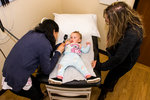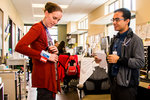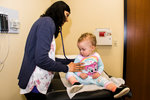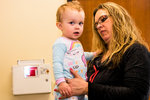






A comprehensive study completed by the University of Wisconsin Population Health Institute places Lewis County near the bottom in Washington State when it comes to the overall health of its citizens and the factors that contribute to a healthy lifestyle.
The 2019 County Health Rankings report ranks Lewis County 30th out of 39 Washington counties in the Health Outcomes category, which includes data points such as average lifespan and the number of people reporting poor physical or mental health. The county fares worse in the Health Factors metric, where it comes in 32nd and slots lower than that in subcategories such as reported rates of adult smoking and obesity.
University of Wisconsin researchers used a variety of data sources, including the National Center for Health Statistics and the Centers for Disease Control to conduct its study.
A reported lack of health providers and other socioeconomic factors also contributed to Lewis County’s low marks.
“They’ve been doing this ranking for seven or eight years now,” said Danette York, director of Lewis County Public Health and Social Services. “It’s one of several data sources we track. We haven’t yet and hopefully never will be the lowest. Comparing counties like this is difficult at best … Rather than looking at the two big numbers, we go in and look at the individual health behaviors.”
York added that it raises concern among county officials when Lewis County data in an individual category comes in worse than the state average. One such example is the rate of adult obesity.
Lewis County adults are obese at a rate of 34 percent, according to the University of Wisconsin study, well above the state average of 28 percent. Obesity is known to be a precursor to several life-threatening ailments such as diabetes and heart disease, high rates of which contribute to lower marks in other areas such as life expectancy.
Dr. Kevin Caserta, chief medical officer for Providence Medical Group in Southwest Washington and the site administrator for Providence Centralia Hospital, said that Lewis County tends to rank poorly in categories that combine population health and societal issues.
He cited nicotine, of which the rate of addiction in Lewis County is 3 percent higher than the state average of 14 percent, as another example of factors being interconnected and the subject of educational classes offered by Providence and other local service providers.
Caserta listed the Valley View Health Center, the United Way and the Lewis Economic Development Council as organizations partnering with Providence to address community health issues. Debbie Campbell, executive director of the United Way of Lewis County, echoed the need for community partnerships to address socioeconomic barriers such as early education opportunities and affordable housing.
Campbell said there have been preliminary discussions among local United Way board members about setting a goal to offer free daycare in Lewis County to go along with their target of lifting 30 percent of Lewis County families out of poverty by 2030.
“We’re at the very beginning stages of that conversation, all centered around the impact of pre-kindergarten and early reading, and how it sets a tone for life ahead,” Campbell said. “It would help, because there are people who aren’t working because they have to take care of kids. Childcare is at such a crisis state right now because of cost and even though some single moms or dads might be working two jobs, they’re still living in poverty.”
Information concerning mental and behavioral health concerns caught Caserta’s eye when he reviewed the study on Monday.
Lewis County residents reported an average of four days per month of poor mental health, slightly above the state average, according to data from the Behavior Risk Factor Surveillance System. There is one mental health provider for every 405 people in Lewis County, a slightly worse ratio than Grays Harbor County but better than Mason County.
The number of primary care physicians, one for every 2,202 people in Lewis County, ranks in the bottom third of the study. Providence operates a rural-track residency program in Centralia with the goal of training young physicians who then remain in the area as professionals.
“Studies have shown where you do your training is likely where you’re going to do your practice,” Caserta said. “… I feel good that we’re going to make positive trends with obesity and nicotine addiction, and once you do that, you’ll see less diabetes, less premature death and early cardiac disease, and those things that are impacting our community.”
Lewis County does fare better than the state average in some areas, most notably with its 84 percent high school graduation rate. Fewer than 80 percent of high school students in Washington state earn a diploma, a mark which local schools collectively failed to reach less than a decade ago.
Raising graduation rates was one of the top priorities to come out of the most recent community health assessment completed in 2014 by Lewis County. York and Campbell each highlighted the efforts by community stakeholders to address the issue.
“We want to have a place for our young people to graduate and move forward into further education that might not be a four-year college track,” York said. “Working with trade schools and other types of non-college training in order to build skills for a workforce. Seeing that graduation rate increase is a good feeling for people countywide; it’s not just our department that works on it.”
The county recently began the process of conducting another community health survey in hopes of completing it by year’s end.
Workers will be out at events across Lewis County to speak with residents about what they think is healthy and unhealthy about the area, as well as what barriers they run into when trying to improve their own quality of life.
Information gleaned from those informal surveys will be compared with quantitative data from the University of Wisconsin study and other sources to see how people’s perceptions of their communities line up with the facts.
“When we last compared the two data sets in 2014, they were actually very close to each other,” York said. “Once we see all that, we’ll publish a report and start working with different groups to address the highest priorities like we did last time.”